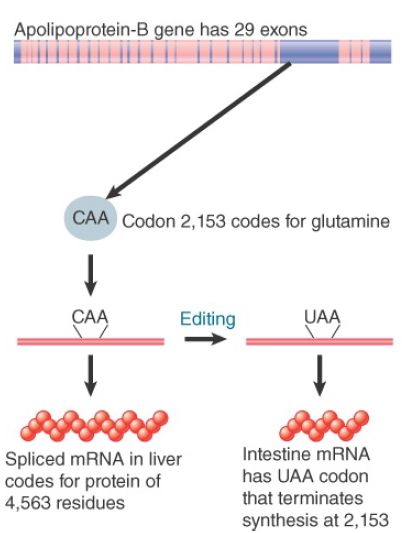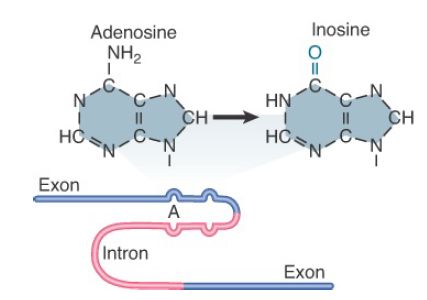

النبات

مواضيع عامة في علم النبات

الجذور - السيقان - الأوراق

النباتات الوعائية واللاوعائية

البذور (مغطاة البذور - عاريات البذور)

الطحالب

النباتات الطبية


الحيوان

مواضيع عامة في علم الحيوان

علم التشريح

التنوع الإحيائي

البايلوجيا الخلوية


الأحياء المجهرية

البكتيريا

الفطريات

الطفيليات

الفايروسات


علم الأمراض

الاورام

الامراض الوراثية

الامراض المناعية

الامراض المدارية

اضطرابات الدورة الدموية

مواضيع عامة في علم الامراض

الحشرات


التقانة الإحيائية

مواضيع عامة في التقانة الإحيائية


التقنية الحيوية المكروبية

التقنية الحيوية والميكروبات

الفعاليات الحيوية

وراثة الاحياء المجهرية

تصنيف الاحياء المجهرية

الاحياء المجهرية في الطبيعة

أيض الاجهاد

التقنية الحيوية والبيئة

التقنية الحيوية والطب

التقنية الحيوية والزراعة

التقنية الحيوية والصناعة

التقنية الحيوية والطاقة

البحار والطحالب الصغيرة

عزل البروتين

هندسة الجينات


التقنية الحياتية النانوية

مفاهيم التقنية الحيوية النانوية

التراكيب النانوية والمجاهر المستخدمة في رؤيتها

تصنيع وتخليق المواد النانوية

تطبيقات التقنية النانوية والحيوية النانوية

الرقائق والمتحسسات الحيوية

المصفوفات المجهرية وحاسوب الدنا

اللقاحات

البيئة والتلوث


علم الأجنة

اعضاء التكاثر وتشكل الاعراس

الاخصاب

التشطر

العصيبة وتشكل الجسيدات

تشكل اللواحق الجنينية

تكون المعيدة وظهور الطبقات الجنينية

مقدمة لعلم الاجنة


الأحياء الجزيئي

مواضيع عامة في الاحياء الجزيئي


علم وظائف الأعضاء


الغدد

مواضيع عامة في الغدد

الغدد الصم و هرموناتها

الجسم تحت السريري

الغدة النخامية

الغدة الكظرية

الغدة التناسلية

الغدة الدرقية والجار الدرقية

الغدة البنكرياسية

الغدة الصنوبرية

مواضيع عامة في علم وظائف الاعضاء

الخلية الحيوانية

الجهاز العصبي

أعضاء الحس

الجهاز العضلي

السوائل الجسمية

الجهاز الدوري والليمف

الجهاز التنفسي

الجهاز الهضمي

الجهاز البولي


المضادات الميكروبية

مواضيع عامة في المضادات الميكروبية

مضادات البكتيريا

مضادات الفطريات

مضادات الطفيليات

مضادات الفايروسات

علم الخلية

الوراثة

الأحياء العامة

المناعة

التحليلات المرضية

الكيمياء الحيوية

مواضيع متنوعة أخرى

الانزيمات
RNA Editing Occurs at Individual Bases
المؤلف:
JOCELYN E. KREBS, ELLIOTT S. GOLDSTEIN and STEPHEN T. KILPATRICK
المصدر:
LEWIN’S GENES XII
الجزء والصفحة:
22-5-2021
2612
RNA Editing Occurs at Individual Bases
Key concept
- Apolipoprotein-B and glutamate receptor mRNAs have site-specific deaminations catalyzed by cytidine and adenosine deaminases that change the coding sequence.
Formerly, a prime axiom of molecular biology was that the sequence of an mRNA can only represent what is encoded in the DNA. The central dogma suggested a linear relationship in which a continuous sequence of DNA is transcribed into a sequence of mRNA that is, in turn, directly translated into polypeptide. The presence of interrupted genes and the removal of introns by RNA splicing introduce an additional step into the process of gene expression (see the RNA Splicing and Processing chapter for details). Briefly, splicing occurs at the RNA level, and it results in removal of noncoding sequences (introns) that interrupt the coding sequences (exons) that are encoded in the DNA sequence.
However, the process remains one of information transfer, in which the actual coding sequence in DNA remains unchanged. Changes in the information encoded by DNA occur in some exceptional circumstances, most notably in the generation of new sequences encoding immunoglobulins in vertebrate animals. These changes occur specifically in the somatic cells (B lymphocytes) in which immunoglobulins are synthesized . New information is generated in the DNA of an individual during the process of reconstructing an immunoglobulin gene, and information encoded in the DNA is changed by somatic mutation. The information in DNA continues to be faithfully transcribed intoRNA.
RNA editing is a process in which information changes at the level of mRNA. It is revealed by situations in which the coding sequence in an RNA differs from the sequence of DNA from which it was transcribed. RNA editing occurs in two different situations, each with different causes. In mammalian cells there are cases in which a substitution occurs in an individual base in mRNA that can cause a change in the sequence of the polypeptide that is encoded. This base substitution is the result of deamination of either adenosine to become inosine or cytidine to become uridine. In trypanosome mitochondria, more widespread changes occur in transcripts of several genes when bases are systematically added or deleted.
FIGURE 1 summarizes the sequences of the apolipoprotein-B (apo-B) gene and mRNA in mammalian intestine and liver cells. The genome contains a single interrupted gene whose sequence is identical in all tissues, with a coding region of 4,563 codons. This gene is transcribed into an mRNA that is translated into a protein of 512 kDa representing the full coding sequence in the liver. A shorter form of the protein (about 250 kDa) is synthesized in the intestine.This protein consists of the N-terminal half of the full-length protein.
It is translated from an mRNA whose sequence is identical to that of liver except for a change from C to U at codon 2153. This substitution changes the codon CAA for glutamine into the ochre codon UAA for termination. Given that no alternative gene or exon is available in the genome to encode the new sequence and no change in the pattern of splicing can be discovered, we are forced to conclude that a change has been made directly in the sequence of the RNA transcript.

FIGURE 1. The sequence of the apo-B gene is the same in the intestine and liver, but the sequence of the mRNA is modified by a base change that creates a termination codon in the intestine.
Another example is provided by glutamate receptors in a rat brain. Editing at one position changes a glutamine codon in DNA into a codon for arginine in the mRNA. The change from glutamine to arginine affects the conductivity of the channel and therefore has an important effect on controlling ion flow through the neurotransmitter.
The events outlined for apo-B and glutamate receptors are the result of deaminations in which the amino group on the nucleotide ring is removed. The editing event in apo-B causes C2153 to be changed to U, and both changes in the glutamate receptor are from A to I (inosine). Deaminations in apo-B are catalyzed by the cytidine deaminase APOBEC (apolipoprotein-B mRNA editing enzyme complex), whereas deaminations in the glutamate receptor are performed by adenosine deaminases acting on RNA (ADARs). This type of editing appears to occur largely in the nervous system. Drosophila melanogaster has 16 (potential) targets for ADARs, and all of the genes are involved in neurotransmission. In many cases, the editing event changes an amino acid at a functionally important position in the protein.
Enzymes that undertake general deamination as such often have broad specificity; for example, the best characterized adenosine deaminase acts on any A residues in a duplexed RNA region. However, deamination of adenosine and cytidine in RNA editing displays specificity. Editing enzymes are related to the general deaminases but have other regions or additional subunits that control their specificity. In the case of apo-B editing, the catalytic subunit of an editing complex is related to bacterial cytidine deaminase but has an additional RNA-binding region that helps to recognize the specific target site for editing. A special adenosine deaminase enzyme recognizes the target sites in the glutamate receptor RNA, and similar events occur in a serotonin receptor RNA. The complex may recognize a particular region of secondary structure in a manner analogous to tRNA-modifying enzymes, or it could directly recognize a nucleotide sequence. The development of an in vitro system for the apo-B editing event suggests that a relatively small sequence (about 26 nucleotides) surrounding the editing site provides a sufficient target. FIGURE 2 shows that in the case of the RNA for the glutamate receptor, GluR-B, a base-paired region that is necessary for recognition of the target site is formed between the edited region in the exon and a complementary sequence in the downstream intron. A pattern of mispairing within the duplex region is necessary for specific recognition. Thus, different editing systems may have different requirements for sequence specificity in their substrates.

FIGURE 2. Editing of mRNA for the glutamate receptor, GluRB, occurs when a deaminase acts on an adenine in an imperfectly paired RNA duplex region.
 الاكثر قراءة في مواضيع عامة في الاحياء الجزيئي
الاكثر قراءة في مواضيع عامة في الاحياء الجزيئي
 اخر الاخبار
اخر الاخبار
اخبار العتبة العباسية المقدسة

الآخبار الصحية















 قسم الشؤون الفكرية يصدر كتاباً يوثق تاريخ السدانة في العتبة العباسية المقدسة
قسم الشؤون الفكرية يصدر كتاباً يوثق تاريخ السدانة في العتبة العباسية المقدسة "المهمة".. إصدار قصصي يوثّق القصص الفائزة في مسابقة فتوى الدفاع المقدسة للقصة القصيرة
"المهمة".. إصدار قصصي يوثّق القصص الفائزة في مسابقة فتوى الدفاع المقدسة للقصة القصيرة (نوافذ).. إصدار أدبي يوثق القصص الفائزة في مسابقة الإمام العسكري (عليه السلام)
(نوافذ).. إصدار أدبي يوثق القصص الفائزة في مسابقة الإمام العسكري (عليه السلام)


















